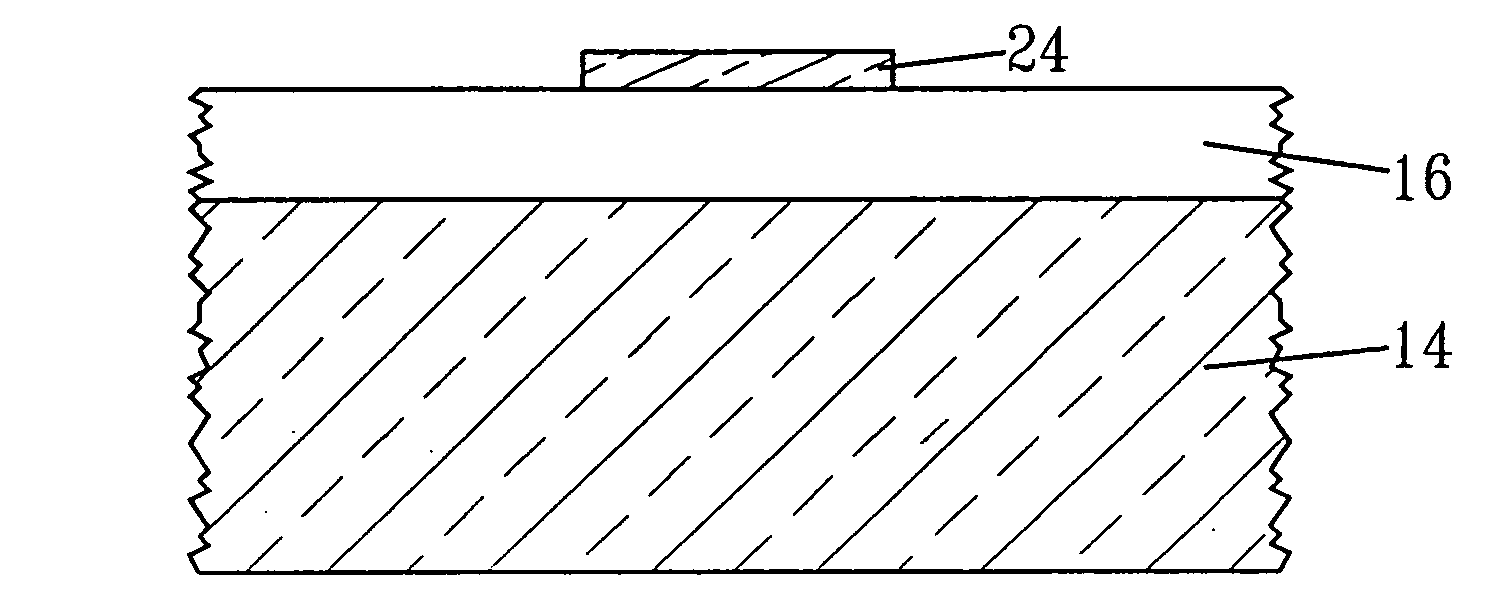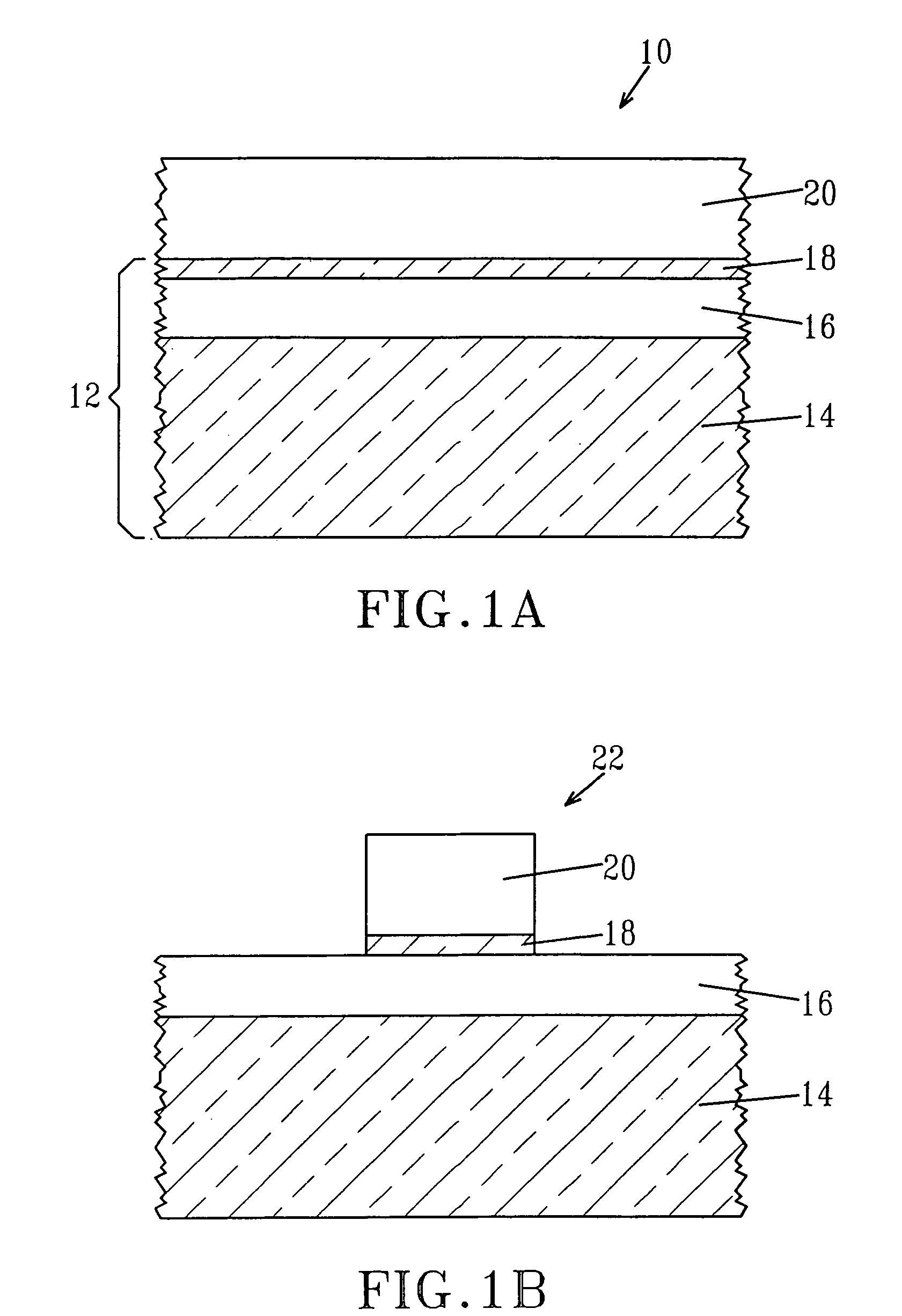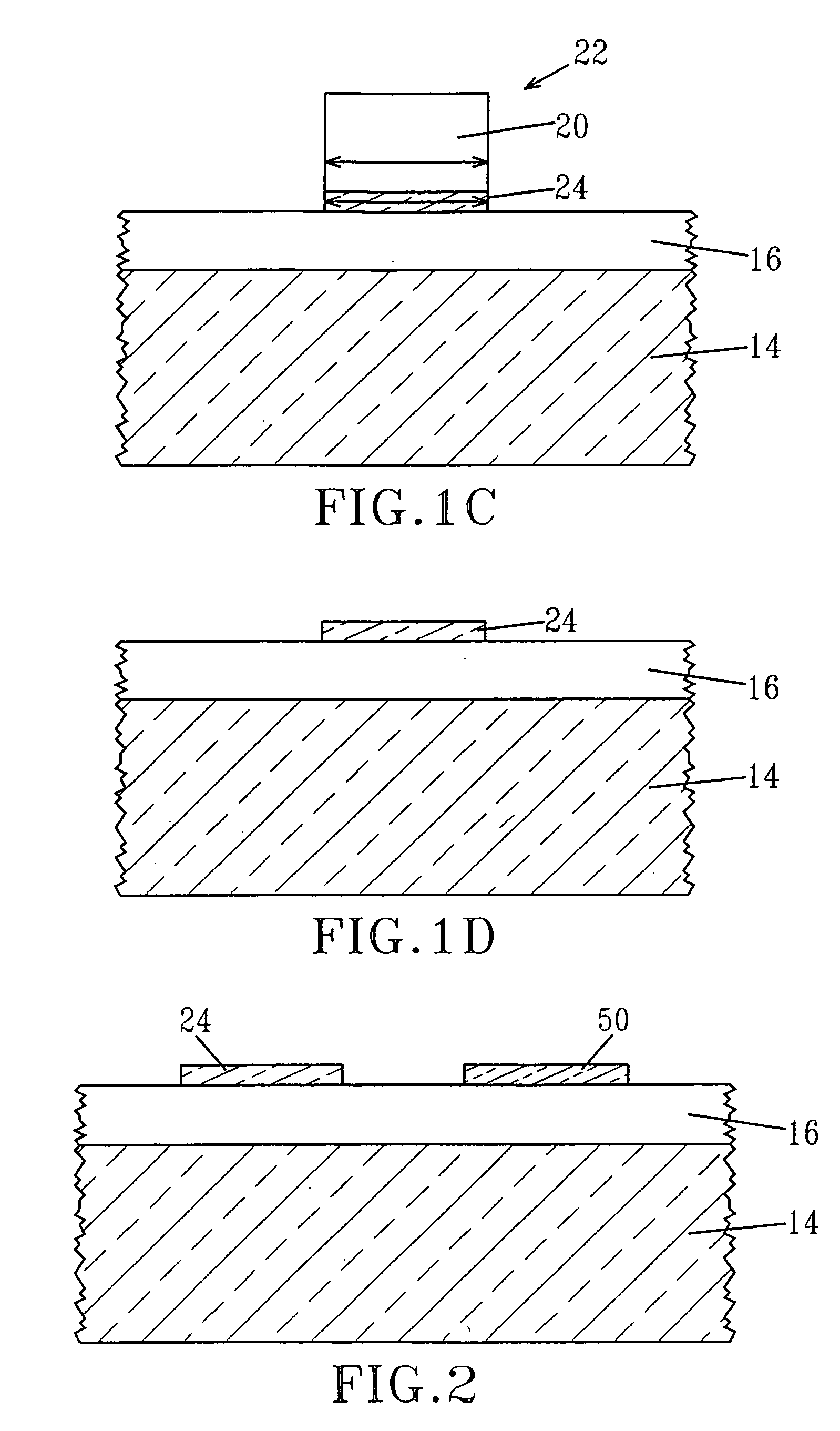Ultra-thin, high quality strained silicon-on-insulator formed by elastic strain transfer
a silicon-on-insulator, elastic strain transfer technology, applied in the direction of basic electric elements, electrical equipment, semiconductor devices, etc., can solve the problems of high vlsi (very large scale integration) applications, thick sige buffer layers are not typically easy to integrate with existing si-based cmos technology, and circuits employing devices with strained si
- Summary
- Abstract
- Description
- Claims
- Application Information
AI Technical Summary
Benefits of technology
Problems solved by technology
Method used
Image
Examples
Embodiment Construction
[0018]The present invention, which provides a method of fabricating a strained semiconductor-on-insulator (SSOI) heterostructure as well as a low-defect density (SFs and TDs) SSOI heterostructure produced by the inventive method, will now be described in greater detail by referring to the drawings that accompany the present application. The accompanying drawings, which are not drawn to scale, are provided for illustrative purposes only and like and / or corresponding elements referred to in the drawings are described with respect to like reference numerals.
[0019]The VEST process begins with first providing a layered structure 10 such as shown in FIG. 1A. Layered structure 10 includes a semiconductor substrate 12 having a stress-providing layer 20 located on an upper surface thereof. The semiconductor substrate 12 includes a bottom semiconductor layer 14, a buried insulating layer 16 and a top semiconductor layer 18 (hereinafter referred to as the first semiconductor layer).
[0020]In th...
PUM
 Login to View More
Login to View More Abstract
Description
Claims
Application Information
 Login to View More
Login to View More - R&D
- Intellectual Property
- Life Sciences
- Materials
- Tech Scout
- Unparalleled Data Quality
- Higher Quality Content
- 60% Fewer Hallucinations
Browse by: Latest US Patents, China's latest patents, Technical Efficacy Thesaurus, Application Domain, Technology Topic, Popular Technical Reports.
© 2025 PatSnap. All rights reserved.Legal|Privacy policy|Modern Slavery Act Transparency Statement|Sitemap|About US| Contact US: help@patsnap.com



